A lush, vibrant lawn is the dream of many a homeowner, but growing one in Hawaii can be quite the challenge. With its unique climate, volcanic soil, and occasional dry spells, finding the perfect grass seed to thrive in the Aloha State can feel like an elusive quest.
Bermuda grass is a top choice for its resilience and adaptability, but there’s more to discover for those keen on cultivating the ideal Hawaiian lawn.
Read on as we delve into the intricacies of the island’s turf and unveil a variety of grass seed options tailored to Hawaii’s distinct conditions.
Bermuda Grass
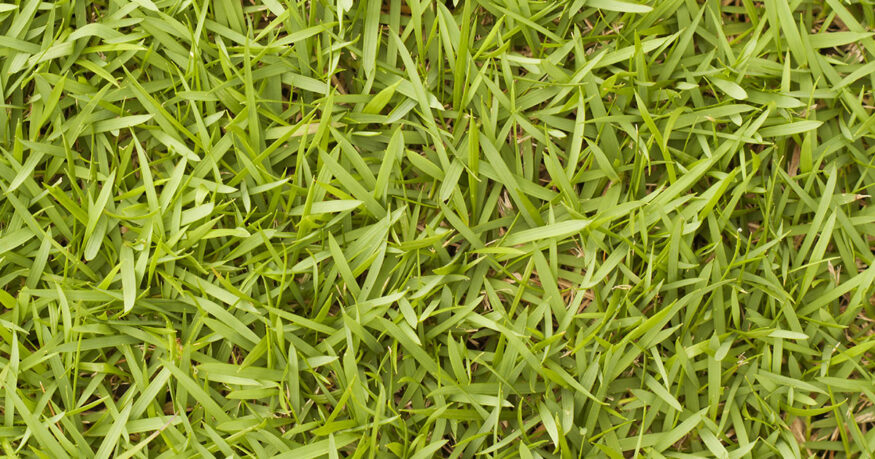
| Also Known As | Bermuda grass, wiregrass; Cynodon dactylon L. |
| Type of Grass | Warm season perennial |
| Optimal Zones | Southern region |
| Root Structure | Deep |
| Winter hardiness | Poor |
| Heat tolerance | Excellent |
| Shade tolerance | Poor |
| Water Requirements | High |
| Drought Tolerance | High |
| Self Repair Capacity | Excellent |
| Overall Maintenance Requirements | Moderate to High |
Why Bermudagrass is a good choice for Hawaii Lawns
Bermuda grass reigns supreme among turfgrasses in Hawaii, thanks to its adaptability to the local climate and soil types. Forming a dense, appealing sod, it spreads mainly through stolon growth, with rhizomes contributing to its aggressive expansion. This rapid growth, with stolons potentially stretching six feet in a year, makes Bermuda grass the ideal solution for high-traffic areas, as it can swiftly mend damaged patches. Additionally, it boasts excellent wear tolerance.
However, sunlight is crucial to Bermuda grass growth. It struggles in full shade and only tolerates partial shade for short periods, requiring full sun exposure for optimal lawn quality. Bermuda grass thrives under attentive management, necessitating ample fertilizer, water, and regular mowing to maintain an attractive turf. Despite its drought tolerance, a significant water supply is essential for a healthy, visually pleasing lawn.
Bermuda grass is versatile, adapting to various soil types and tolerating both alkaline and acidic conditions. It favors well-drained soils with a pH of 6 to 7, and while its vigor is diminished in poorly drained soils, it can still produce satisfactory turf on clay.
As the most submersion-tolerant turfgrass, it is the top choice for stream banks. Bermuda grass (Cynodon dactylon) withstands Hawaii’s tropical climate and offers drought resistance and excellent foot traffic tolerance. Establishing a dense turf, it spreads swiftly via stolons and rhizomes, and performs best in full sunlight.
Several hybrids are available, but as they do not yield viable seeds, they must be established through sod or sprigs. Common Bermuda grass, however, is easily cultivated from seed. Its drought tolerance renders it suitable for areas in Hawaii, Oahu, and Maui where water restrictions are increasingly common.
Bermuda grass boasts desirable features such as:
- wear resistance
- a deep root system
- low moisture requirements
- and tolerance to saline, alkaline, and moderately acidic soils
On the downside, it can:
- be overly vigorous
- invade unwanted areas
- produce frequent seed heads
- and be susceptible to some lawn insects
- also accumulating thatch.
Zoysia Grass
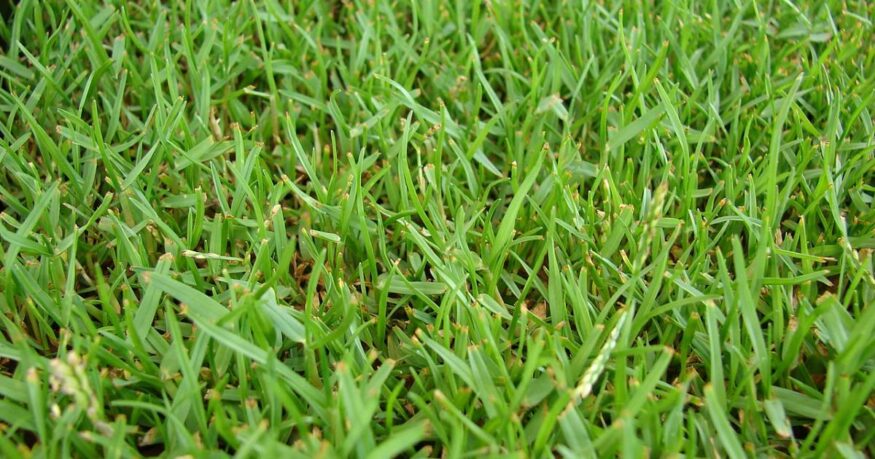
| Also Known As | Zoysiagrass; Zoysia sp. |
| Type of Grass | Warm season perennial |
| Optimal Zones | Southern through warmer transition zones |
| Root Structure | Shallow to medium |
| Winter hardiness | Good |
| Heat tolerance | Excellent |
| Shade tolerance | Partial |
| Water Requirements | Medium |
| Drought Tolerance | Good |
| Self Repair Capacity | Low |
| Overall Maintenance Requirements | Moderate |
Why Zoysiagrass is a Good Choice For a Hawaiian Lawn
Zoysiagrasses are an excellent choice for areas prone to foot traffic, as this warm-season perennial lawn displays exceptional tolerance under typical lawn conditions. It forms a thick, dense coverage, spreading through a combination of rhizome root systems and stolons. With fine blades containing high silica content, this grass is notably stiff.
Zoysiagrass flourishes in both moderate shade and full sunlight, offering admirable drought tolerance once established. In severe droughts, the grass may turn straw-colored but will recover with adequate watering.
Desirable features of zoysiagrass include:
- wear resistance
- shade toleranc
- salinity and mild soil acidity tolerance
- the absence of mounds
- weed suppression when well-established
- and compatibility with most herbicides.
Furthermore, it resists normal wear, tolerates drought and salinity, and boasts a deep root system, all while producing a high-quality turf with proper management.
However, zoysiagrass does have its drawbacks:
- it is susceptible to certain insects and diseases
- accumulates thatch
- requires a heavy-duty mower
- demands good drainage, and has stiff leaves
- produces seed heads
- does not tolerate excessive traffic
- and recovers slowly
Zoysiagrass also struggles in poorly drained soils, making it essential for homeowners to consider these factors when deciding on the right lawn for their property in Hawaii.
Centipede Grass
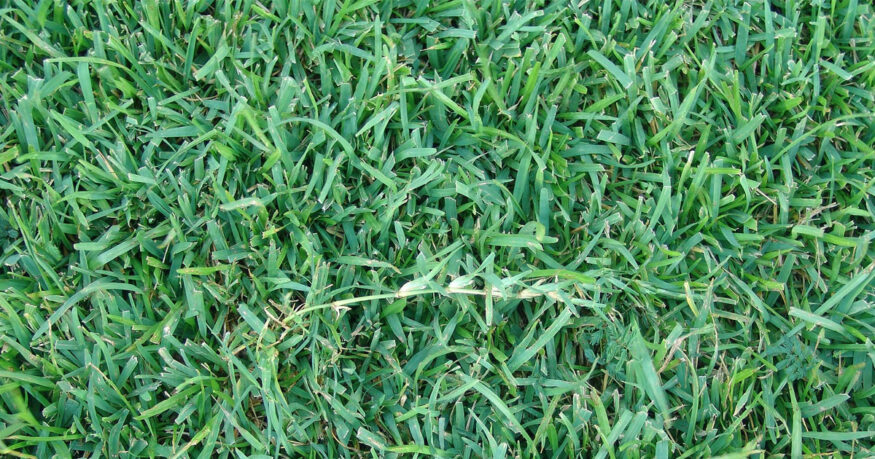
| Also Known As | Lazy man’s grass; Eremochloa ophiuroides |
| Type of Grass | Warm season perennial |
| Optimal Zones | 7 – 10, South Eastern US; Hawaii |
| Root Structure | Shallow |
| Winter hardiness | Very poor |
| Heat tolerance | Excellent |
| Shade tolerance | Fair |
| Water Requirements | Moderate to High |
| Drought Tolerance | Moderate to High |
| Self Repair Capacity | Poor |
| Overall Maintenance Requirements | Low |
Why Centipedegrass is a good choice for a Hawaii Lawn
Centipede grass is a popular choice for some Hawaiians who seek an acceptable turf quality with minimal effort. This low-maintenance grass often encounters problems when homeowners over-enthusiastically try to improve its appearance.
As a slow-growing, lime green, coarse turfgrass, centipede grass thrives in acid sandy soils, flourishing in slightly moist, well-drained soil with a pH between 4.5 and 6.0. High pH soils may cause iron deficiency, leading to a bleached leaf appearance, which can be countered with foliar iron applications for a darker green hue.
Although centipede grass has a better shade tolerance than Bermuda grass, it is inferior to St. Augustine grass in this regard. Its wear tolerance is poor, and it recovers slowly from injury due to its slow growth rate. Centipede grass is native to China and Southeast Asia and is common in the southeastern U.S. mainland and Hawaii. This medium-green, medium-textured, slow-growing turfgrass is well-adapted to low-fertility conditions.
Centipede grass’s short, thick, leafy stolons allow it to form a dense mat of low-growing stems and leaves. It is particularly well-suited to moist, acidic, coarse-textured, or moderately heavy soils with low fertility but does not tolerate flooding. Its poor salt and salt spray tolerance renders it unsuitable for beachfront areas.
Centipede grass is an ideal choice for lawns and parks but not for athletic fields or other high-traffic areas. Its low-maintenance requirements make it increasingly popular for use in lawns and utility turfs.
Seashore Paspalum
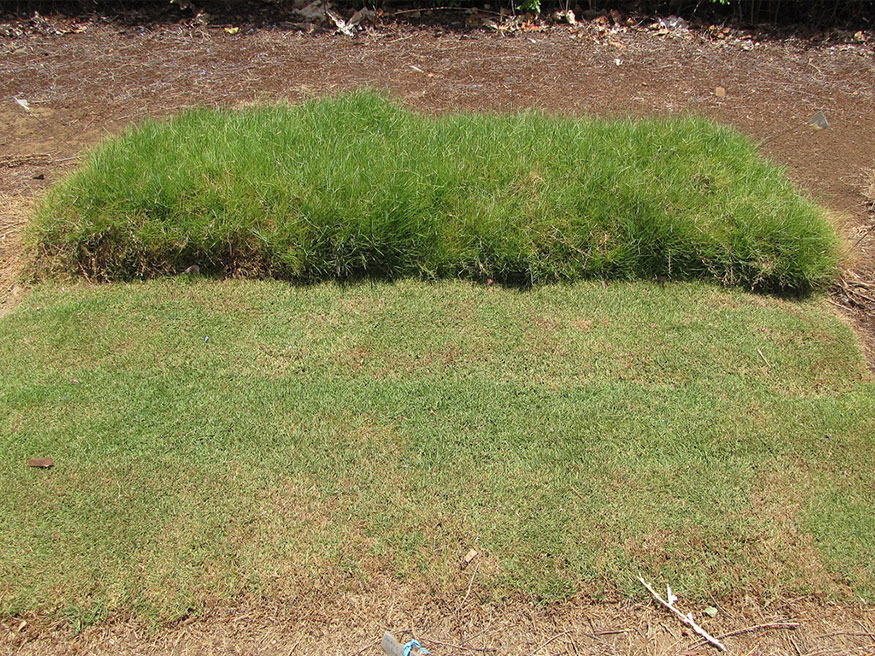
| Also Known As | Paspalum vaginatum |
| Type of Grass | Warm season perennial |
| Optimal Zones | Coastal regions, Hawaii |
| Root Structure | Rhizome-based root system, stolons |
| Winter hardiness | Poor |
| Heat tolerance | Excellent |
| Shade tolerance | Good |
| Water Requirements | Moderate to High |
| Drought Tolerance | Moderate to High |
| Self Repair Capacity | Moderate |
| Overall Maintenance Requirements | Low |
Why Seashore Paspalum Grows Well in Hawaii
Seashore paspalum (Paspalum vaginatum) is a tropical perennial grass that boasts the highest salt-spray tolerance of any grass seed variety, as stated on the University of Hawaii’s website. This feature makes it an excellent choice for beach-front landscapes in Hawaii. The grass can endure irrigation with brackish water and thrives in areas with a low saltwater table level.
Growing rapidly and offering good foot traffic tolerance, seashore paspalum spreads through a rhizome-based root system and stolons. The slightly coarse blades result in a dense turf, giving it outstanding turf quality, bright green color, and a beautiful, uniform appearance.
Seashore paspalum is well-suited to temperate, hot, and humid coastal climates, providing excellent drought tolerance and good shade tolerance.
Ideal for turfgrass areas irrigated with effluent water or naturally high saline conditions, seashore paspalum is indigenous to Georgia and South America but has become popular in Hawaii. It has a finer texture than centipedegrass and slightly coarser than common Bermuda grass, with leaves that are soft to the touch and blue-green to dark green when properly fertilized.
Seashore paspalum’s exceptional salt tolerance and adaptability make it an excellent choice for coastal areas exposed to salt spray, high-wave inundation, or brackish irrigation water. With high shoot density, this grass can withstand weed invasion and recovers rapidly from damage. Its moderate shade tolerance and wear resistance make seashore paspalum a preferred option for homeowners in Hawaii.
Hawaii’s Climate And Growing Challenges For Lawns
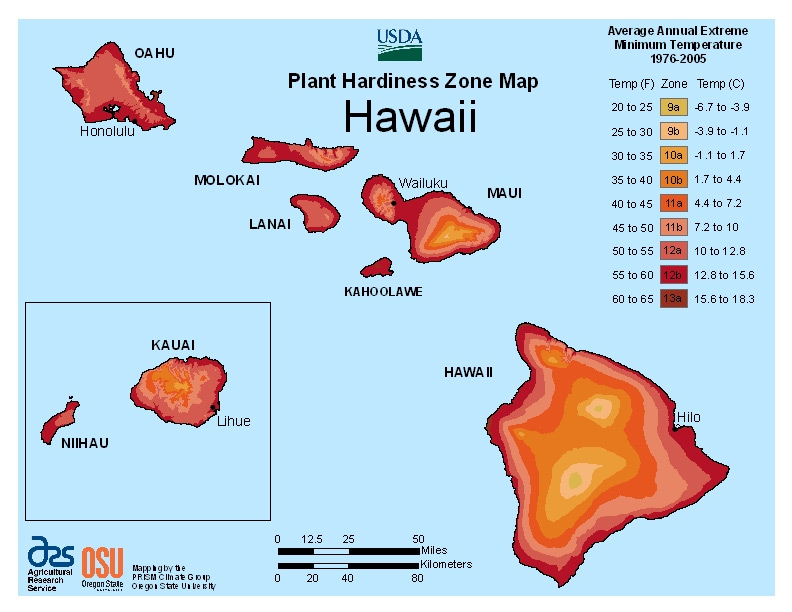
Hawaii’s climate is characterized by warm temperatures and abundant rainfall, providing a generally favorable environment for lawns. However, the diverse microclimates across the islands present unique challenges for homeowners.
Rainfall Variability
Rainfall can vary greatly, with some areas receiving over 400 inches annually while others get less than 20 inches. This creates different water requirements for lawns depending on their location.
Temperature Fluctuations
Temperature fluctuations are relatively mild, but elevation changes can result in cooler temperatures, influencing grass selection for higher-altitude properties.
Soil Condition
Hawaiian soils are typically volcanic in origin, ranging from highly fertile to nutrient-poor. Some regions also have high salinity or alkalinity, which can affect grass choice.
Wind and Salt Exposure
Coastal properties face strong winds and salt spray, requiring grass varieties with high salt tolerance, such as seashore paspalum.
Shade Tolerance
Dense tree canopies and structures can create shady environments, necessitating shade-tolerant grasses for optimal growth.
Pest and Disease Pressure
Tropical conditions can increase the prevalence of pests and diseases, making it crucial to select grasses with natural resistance.
In conclusion, Hawaii’s diverse climate and soil conditions require careful consideration when selecting the ideal grass for a lawn. Homeowners should account for factors such as rainfall, temperature, soil type, shade, and pest pressures to ensure a healthy, thriving lawn.